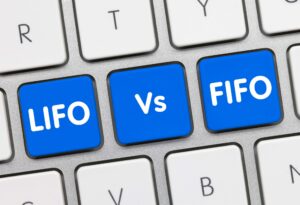
Retained earnings are a portion of a company’s profit that is held or retained from net income at the end of a reporting period and saved for future use as shareholder’s equity. Retained earnings are are retained earnings a current liabilities also the key component of shareholder’s equity that helps a company determine its book value. Both revenue and retained earnings can be important in evaluating a company’s financial management.

What is the formula for the retained earnings ratio?
- Negative retained earnings are a sign of poor financial health as it means that a company has experienced losses in the previous year, specifically, a net income loss.
- It is significantly easier to see the changes in the accounts on a statement of stockholders’ equity rather than as a paragraph note to the financial statements.
- In 2008, the AICPA recognized the IASB as a standard setter of acceptable GAAP and designated IFRS and IFRS for SMEs as an acceptable set of generally accepted accounting principles.
- Retained earnings are affected by any increases or decreases in net income and dividends paid to shareholders.
- Now your business is taking off and you’re starting to make a healthy profit which means it’s time to pay dividends.
The first part of the asset definition does not recognize retained earnings. Secondly, retained earnings are economic benefits that have already occurred. The combination of the last two bullet points is the amount of the company’s net income. Revenue is often the first determinant in deciding how a company performed. Gross sales are calculated by adding all sales receipts before discounts, returns, and allowances.
Are Retained Earnings Listed on the Income Statement?
You first need to determine the monthly interest rate by dividing 3% by twelve months (3%/12), which is 0.25%. The monthly interest rate of 0.25% is multiplied by the outstanding principal balance of $10,000 to get an interest expense of $25. The scheduled payment is $400; therefore, $25 is applied to interest, and the remaining $375 ($400 – $25) is applied to the outstanding principal balance. Next month, interest expense is computed using the new principal balance outstanding of $9,625. This means $24.06 of the $400 payment applies to interest, and the remaining $375.94 ($400 – $24.06) is applied to the outstanding principal balance to get a new balance of $9,249.06 ($9,625 – $375.94). These computations occur until the entire principal balance is paid in full.

Why Aren’t Retained Earnings an Asset?

Retained earnings being low indicates that much of the company’s profits are paid out to shareholders in dividends. For newer companies looking to expand, it’s common to see higher retained earnings, since they will focus on reinvesting profit into the business. A company is normally subject to a company tax on the net income of the company in a financial year. The amount added to retained earnings is generally the after tax net income. In most cases in most jurisdictions no tax is payable on the accumulated earnings retained by a company.
Firm of the Future
- Shareholders, analysts and potential investors use the statement to assess a company’s profitability and dividend payout potential.
- Understanding retained earnings is essential for anyone involved in business.
- When reinvested, those retained earnings are reflected as increases in assets (which could include cash) or reductions to liabilities on the balance sheet.
- For various reasons, some firms appropriate part of their retained earnings (RE).
- From a practical perspective, it represents everything a company owns (the company’s assets) minus all the company owes (its liabilities).
This book uses the Creative Commons Attribution-NonCommercial-ShareAlike License and you must attribute OpenStax. Retained earnings are reclassified as one or more types of paid-in capital under two general circumstances. A fourth reason for appropriating RE arises when management wishes to disclose voluntary dividend restrictions that have been created to assist the accomplishment of specific organizational goals. For various reasons, some firms appropriate part of their retained earnings (RE). You might also be interested in checking out our complete suite of small business software modules, many of them template-driven.

- The entry to correct the error contains a decrease to Retained Earnings on the statement of retained earnings for $1,000.
- It’s the number that indicates how much capital you can reinvest in growing your business.
- Retained are part of your total assets, though—so you’ll include them alongside your other liabilities if you use the equation above.
- Interest payable can also be a current liability if accrual of interest occurs during the operating period but has yet to be paid.
Though retained earnings are not an asset, they can be used to purchase assets in order to help a company grow its business. Retained earnings are affected by any increases or decreases in net income and dividends paid to shareholders. As a result, any items that drive net income higher or push it lower will ultimately affect retained earnings.

How Dividends Impact Retained Earnings
At least not when you have Wave to help you button-up your books and generate important reports. It is often referred to as net worth or net assets in the financial world and as stockholders’ equity or shareholders’ equity when discussing businesses operations of corporations. From a practical perspective, it represents everything a company owns (the company’s assets) https://www.bookstime.com/articles/times-interest-earned-ratio minus all the company owes (its liabilities). A company’s retained earnings refer to the amount of net income (or loss) accumulated since the beginning of operations minus all dividends distributed to shareholders. Undistributed earnings are retained for reinvestment back into the business, such as for inventory and fixed asset purchases or paying off liabilities.
Notes payable
When the company pays its balance due to suppliers, it debits accounts payable and credits cash for $10 million. When a company determines that it received an economic benefit that must be paid within a year, it must immediately record a credit entry for a current liability. Depending on the nature of the received benefit, the company’s accountants classify it as either an asset or expense, which will receive the debit entry. For example, a company might have 60-day terms for money owed to their supplier, which results in requiring their customers to pay within a 30-day term. Current liabilities can also be settled by creating a new current liability, such as a new short-term debt obligation. Retaining earnings by a company increases the company’s shareholder equity, which increases the value of each shareholder’s shareholding.